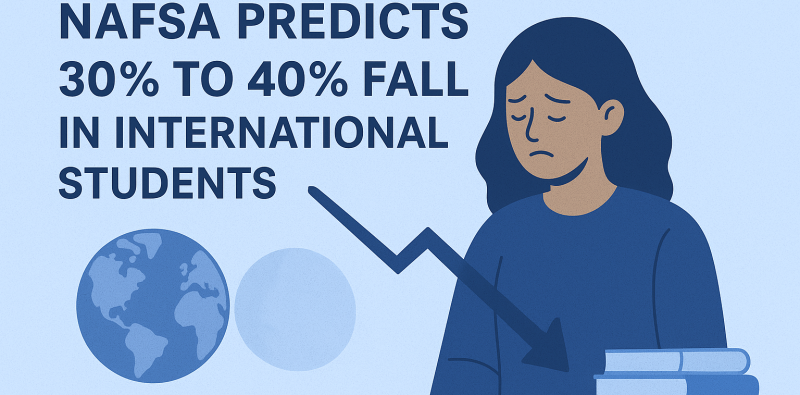
cademic semester approaches in just a few weeks, U.S. colleges and universities are bracing for a significant decline in international student numbers, with projections estimating a reduction of 30% to 40%. This translates to approximately 80,000 fewer students compared to the 2024-2025 academic year, according to a recent analysis by leading education advocates. The anticipated drop could shrink the total international student population to around 1 million, a figure reminiscent of the post-pandemic lows seen in 2021-2022.
A Shift in Enrollment Trends
This forecast, detailed in the “Fall 2025 Global Education Impact Report” released on July 30, 2025, marks a stark reversal from earlier predictions of modest growth or stability for the 2025-2026 academic year. The report, compiled by the International Education Network (IEN) in collaboration with its analytics partner, Global Education Insights based in Boston, highlights a troubling trend that could see the U.S. lose its edge as a premier destination for global learners. The economic fallout is equally concerning, with an estimated $7 billion reduction in the $46 billion annual contribution international students make to the U.S. economy, potentially costing 60,000 jobs.
Dr. Emily Harper, IEN’s executive director, explained the shift: “We’ve observed a series of policy and procedural changes that have created uncertainty for prospective students. By analyzing visa issuance data, student enrollment records, and feedback from our global network, we’ve identified a pattern that suggests a steep decline is imminent.”
Underlying Causes
Several factors are driving this downturn. First, a temporary suspension of student visa interviews from late May to mid-June 2025, initiated by the State Department under new security protocols, disrupted the application cycle. Secretary of State Daniel Carter’s directive to pause additional F, M, and J visa appointments pending enhanced social media vetting left many students in limbo, with vague guidance delaying resolutions until after June 18. Dr. Harper noted, “The lack of clarity around what social media vetting entails has added a layer of anxiety, leaving students uncertain about their status even after interviews.”
Second, limited consular appointment availability has exacerbated delays, particularly affecting large cohorts from India (over 330,000 students) and China (nearly 280,000), who together represent a significant portion of the international student body. Reports from education consultants in Mumbai indicate wait times of up to 60 days in major cities, forcing many to reconsider their plans.
Third, a noticeable decline in visa approvals—down 12% from January to April 2025 and 22% in May compared to the previous year—signals a broader trend predating the current administration. Dr. Harper pointed out, “This issue spans multiple administrations, with higher denial rates disproportionately impacting students from the Global South, including Africa and South Asia.”
Finally, recent visa restrictions targeting 19 countries, including conflict zones like Afghanistan and Sudan, have further reduced the applicant pool. These nations contribute significantly to the economic benefits of international education, supporting thousands of jobs that are now at risk.
Long-Term Implications
The report warns that this decline could have lasting repercussions. Dr. Harper emphasized, “The U.S. risks losing its appeal as a study destination at a time when global competition is intensifying. Countries like Canada and Germany are streamlining their processes, offering more attractive alternatives.” Data from Global Study Trends, a Rotterdam-based research firm, shows a 50% drop in U.S. study interest among prospective bachelor’s and master’s students between January and late July 2025, reflecting a shift in global preferences.
Beyond economics, the erosion of trust among students and families could hinder future enrollment recovery. “Rebuilding confidence will require consistent policy changes over years, not months,” Dr. Harper cautioned. With other nations aggressively courting talent, the U.S. faces a critical moment to address these challenges and reaffirm its commitment to international education.
A Call for Action
As the fall semester nears, education leaders are urging the government to expedite visa processing, provide clear vetting guidelines, and reconsider restrictive policies. The stakes are high—not just for universities but for the nation’s global standing and economic vitality. Without swift intervention, the U.S. could see a generation of international talent turn elsewhere, reshaping the landscape of global education for decades to come.
